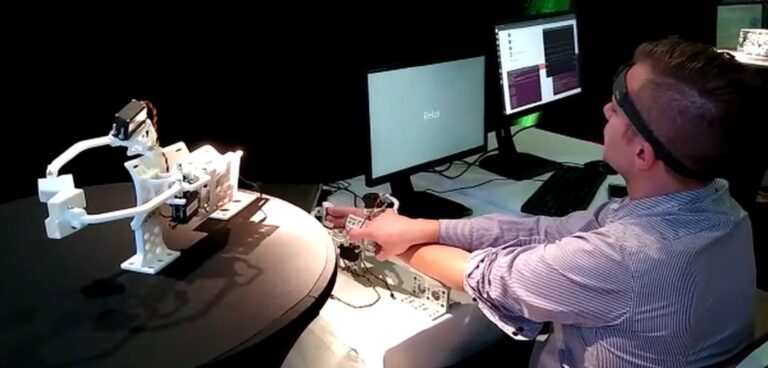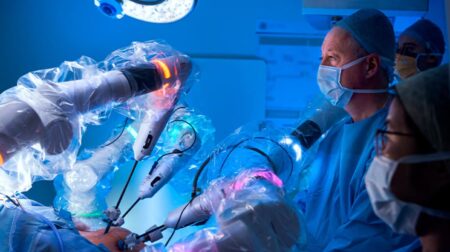The NeuRestore project is working to develop a robotic exoskeleton, virtual reality (VR) component and algorithmic model which could help those with mobility issues regain arm movement, without the need of specialist physiotherapists.
The Essex Innovation Centre, a strategic partnership between the University of Essex and TWI, is currently working with consortium members Generic Robotics and Castalia Innovation on the project. It aims to aid patients that have suffered a stroke, which the Stroke Alliance for Europe reports affects 13.7 million people each year.
NeuRestore looks to create a cost-effective (£98k licensed unit/year) and non-invasive brain-computer interface (BCI), specifically tailored for motor rehabilitation of upper limb weakness in stroke survivors.
Each partner is responsible for delivering different parts of the BCI with Generic Robots focusing on constructing a robotic exoskeleton that covers the whole hand and arm, Castalia Innovation developing the VR, and the Essex Innovation Centre working on the algorithmic model and the integration with the robotic exoskeleton.
NeuRestore uses electroencephalogram (EEG) devices to monitor and record the brain’s electrical patterns while simultaneously receiving trigger feedback or an action output. To achieve a comprehensive picture of cerebral activity, motor imagery is employed.
With the repetition of mental images of movements, an algorithmic model is calibrated to identify and classify when the patient shows true intention of movement. The trained model is then paired with a robotic hand exoskeleton so that action outputs are generated from classifying the brain signals, and the movement of the robotic fingers is synchronised with them.
According to the consortium, the whole process becomes even more immersive when the patient enters a virtual 3D environment where they can see their hand move, providing a more realistic visual output of their imagined movement. This VR dimension can help with building a stronger link between brain signals and subsequent real-life physical movements.
Last year, NeuRestore was demonstrated at the University of Essex’s Knowledge Transfer Partnership Awards event, giving an insight into progress so far and the further development planned.
The demo session utilised a EEG ‘Muse Brain-Sensing Headband’ and a pair of exoskeletons, with the user wearing the first exoskeleton and the second being positioned at a distance. This set-up was designed to show that the exoskeleton motions were exclusively triggered by the algorithmic model being able to classify the EEG signals and were not the output of the healthy user’s movements.
Panos Chatzakos, director of the Essex Innovation Centre, said: “This project is enabled by the complementary expertise and experience of the consortium partners who, together, are combining their knowledge of advanced medical technologies development and application to deliver a brand new support system for stroke patients, that is both affordable and proven effective at making a real difference to people’s recovery.”








